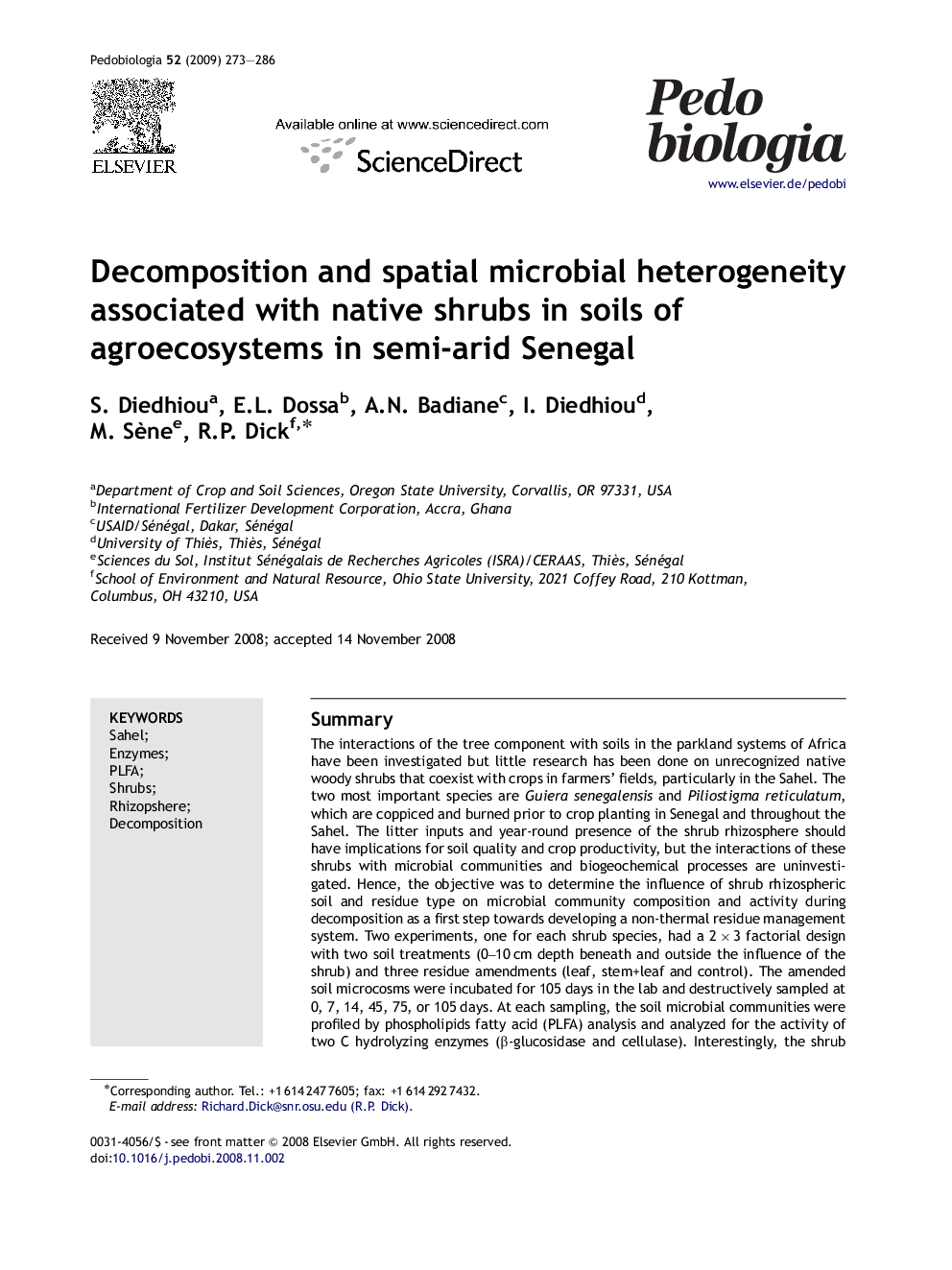| کد مقاله | کد نشریه | سال انتشار | مقاله انگلیسی | نسخه تمام متن |
|---|---|---|---|---|
| 2061322 | 1076453 | 2009 | 14 صفحه PDF | دانلود رایگان |

SummaryThe interactions of the tree component with soils in the parkland systems of Africa have been investigated but little research has been done on unrecognized native woody shrubs that coexist with crops in farmers’ fields, particularly in the Sahel. The two most important species are Guiera senegalensis and Piliostigma reticulatum, which are coppiced and burned prior to crop planting in Senegal and throughout the Sahel. The litter inputs and year-round presence of the shrub rhizosphere should have implications for soil quality and crop productivity, but the interactions of these shrubs with microbial communities and biogeochemical processes are uninvestigated. Hence, the objective was to determine the influence of shrub rhizospheric soil and residue type on microbial community composition and activity during decomposition as a first step towards developing a non-thermal residue management system. Two experiments, one for each shrub species, had a 2×3 factorial design with two soil treatments (0–10 cm depth beneath and outside the influence of the shrub) and three residue amendments (leaf, stem+leaf and control). The amended soil microcosms were incubated for 105 days in the lab and destructively sampled at 0, 7, 14, 45, 75, or 105 days. At each sampling, the soil microbial communities were profiled by phospholipids fatty acid (PLFA) analysis and analyzed for the activity of two C hydrolyzing enzymes (β-glucosidase and cellulase). Interestingly, the shrub canopy effect on the microbial communities was stronger than the residue type. The fungal biomarkers were more closely correlated than other microbial groups to residue chemistry whereas, Gram-positive bacterial and fungal markers (18:2ω6c, 18:1ω9c) were highly correlated with enzyme activities. In contrast, the actinomycete marker (10 Me 16:0) was poorly correlated with enzyme activities. We conclude that shrub rhizospheres in Sahaliean agroecosystems are distinct components in controlling microbial community composition, promoting fungi, microbial diversity, and litter decomposition.
Journal: Pedobiologia - Volume 52, Issue 4, 10 May 2009, Pages 273–286